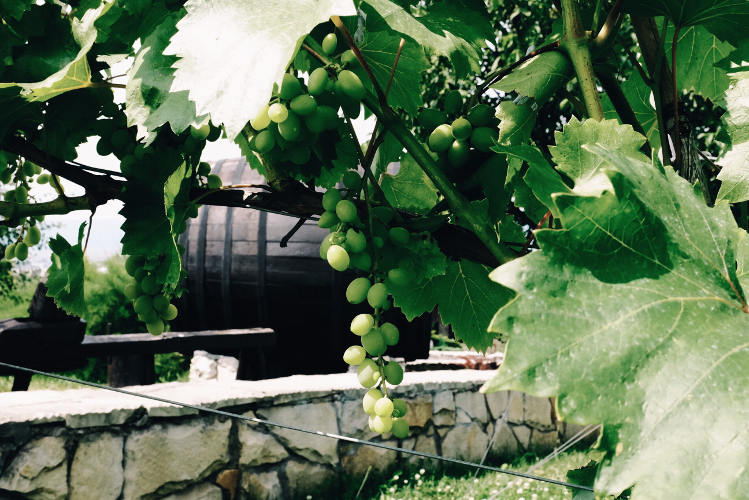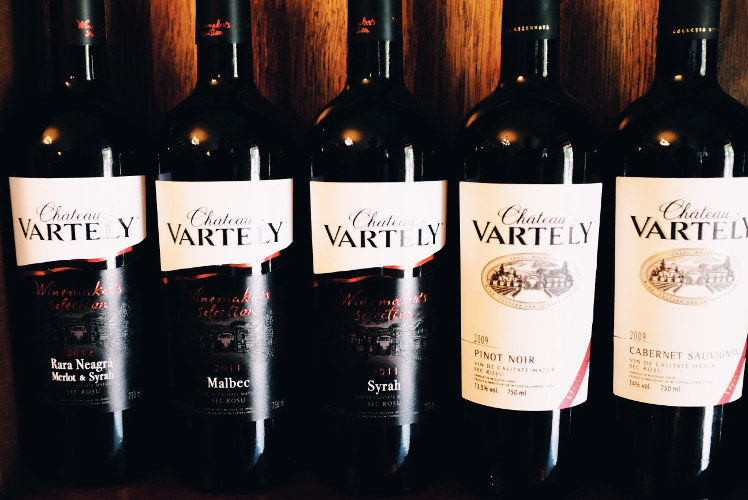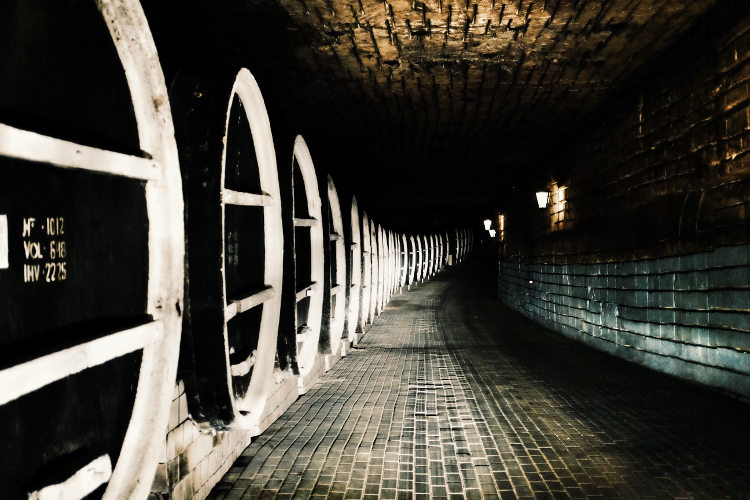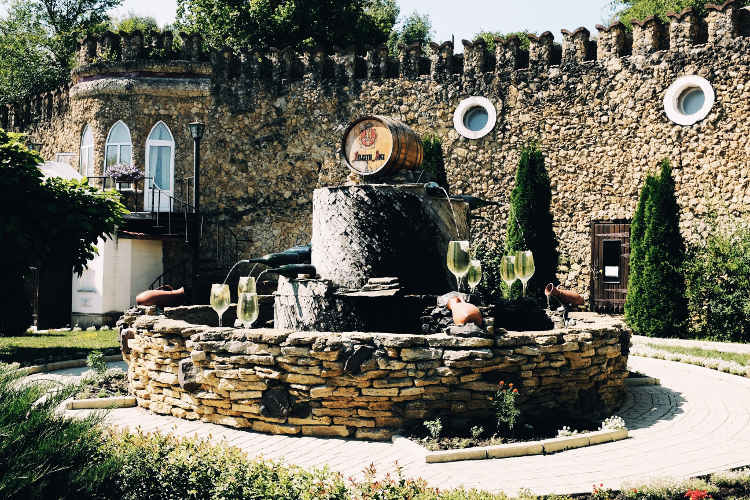Decades ago, Moldova was known within the Soviet Union for making that country’s best wine. Under communism, however, standards suffered as the emphasis shifted from quality to quantity. When the USSR collapsed in the early 1990s, the wine industry was left in shambles. In the past few years, several new, privately owned wineries have opened up and raised the bar; the best of these offer overnights with lavish meals and tastings. Pair a visit with a tour of at least one of the country’s mind-bendingly extensive wine cellars for an oenophilic experience to rival any in Europe.

Moldova, though small, has four distinct grape-growing regions, and produces a number of quality reds and whites. Whites, or vin alb, predominate in the northern regions of Bălți and Codru, while reds, called negru or roşu, are grown mostly in the Dniestr and Cahul regions of the south. The Dniestr region (after the Dniestr river) is home to arguably the country’s best-known indigenous grape, Rara Neagră.
Wines are typically made from both international varietals and local Moldovan (or Romanian) grapes. For better whites, look out for Chardonnay, Sauvignon Blanc and Riesling; for reds, Cabernet Sauvignon, Merlot and Pinot Noir are all popular. As for local grapes, in addition to Rara Neagră, try something made from Fetească Albă, a light, flowery white, or Fetească Neagră, a dark red that often brings a hint of plums.

Moldova’s wine attractions run deeper (in this case, much deeper) than mere vineyards. Some of the largest wineries have extensive underground storage cellars that stretch on for hundreds of kilometres. Even if you haven’t got the slightest interest in wine, these labyrinthine cellars, carved in limestone, are fascinating to explore.
The cellars at the Cricova winery, 15km north of Chişinău, are the best known (but incredibly, at 120km, not the longest). Some 60km of the tunnels, which date from the 15th century, are lined wall-to-wall with bottles.
The most interesting part of the tour is a wineglass-shaped cellar of collectable bottles, including some 19 bottles of pre-WWII Mosel wine that once belonged to Nazi party leader Hermann Göring, a 1902 bottle of Becherovka from the Czech Republic, a 1902 bottle of Passover wine from Jerusalem, and a number of pre-WWII French reds.
Cricova wines (especially the sparking varieties) enjoy a strong national and international reputation. Legend has it that in 1966 Soviet cosmonaut Yuri Gagarin entered the cellars and only re-emerged (with help) two days later. Russian president Vladimir Putin celebrated his 50th birthday here.
You must have private transport and advance reservations to get into Cricova, or arrange for staff to pick you up in Chişinău. Check the website for tour options and prices (the higher the price, the more tastings or food included).
Similar to Cricova but bigger and possibly more impressive, the wine cellars at Mileştii Mici, 20km south of Chişinău near the town of Ialoveni, stretch out for nearly 200km. The cellars hold more than 2 million bottles, making this the world's largest wine collection according to the Guinness Book of World Records.
Guided vehicle tours of the cellars are offered three times daily (at 10am, 1pm and 3.30pm), though you'll have to have your own wheels and book in advance by phone or email. Otherwise, pre-arrange a tour through a travel agency or find someone with a car.

Keen to introduce their wines to new customers, two of the country's best-known smaller wineries, Purcari and Chateau Vartely, tempt wine lovers into overnights by pairing tastings with great food and glamorous digs in bucolic settings.
Purcari, 120km southeast of Chişinău in the Dniestr growing region, enjoyed an outsized international reputation in the 19th century built on the popularity of its Rara Neagră grape. At the time, that was the secret sauce behind the prize-winning red Negru de Purcari (the winery still produces this popular varietal, but now it’s made mostly from Cabernet Sauvignon).
After reconstituting itself in the early 2000s, the winery now produces a number of top-rated whites and reds, as well as offering eight handsome suites, done out in period furnishing and tiled floors, and an excellent restaurant. Tour the cellars and see the historic collection of tens of thousands of bottles.
Chateau Vartely occupies a secluded spot near the city of Orhei, about 60km north of Chişinău. Here the inducement is not just the very good whites and reds, but cosy accommodation in one of 12 pretty wooden bungalows, each with their own separate sleeping and sitting areas, and terraces, as well as a very good restaurant.

Moldova is relatively small and Chişinău makes a natural base for exploring the wine regions. Of course, you can sample the country’s wines without ever leaving the capital. True aficionados will want to time their arrival for the National Wine Day celebration held in Chişinău over the first weekend in October.
Carpe Diem is the kind of informal, epicurean wine store that every city should have. It offers the best wines from Cricova and Chateau Vartely, as well as better bottles from up-and-coming smaller wineries such as Etcetera, Mezalimpe and Equinox. The friendly, knowledgeable staff speak English.
The hotel scene, while still oriented mainly toward the top end, is slowing improving. If a splurge is in the cards, we like Jazz Hotel for its sleek modern rooms, friendly English-speaking reception desk and unbeatable central location. A decent midrange option is the nearby Art-Rustic Boutique Hotel, which offers a dozen clean, comfortable rooms, some of which have private balconies and traditional wooden furnishings.